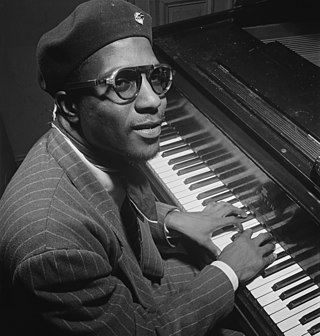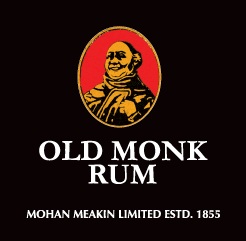
Shaolin Monastery, also known as Shaolin Temple, is a renowned monastic institution recognized as the birthplace of Chan Buddhism and the cradle of Shaolin Kung Fu. It is located at the foot of Wuru Peak of the Songshan mountain range in Dengfeng County, Henan Province, China. The name reflects its location in the ancient grove of Mount Shaoshi, in the hinterland of the Songshan mountains. Mount Song occupied a prominent position among Chinese sacred mountains as early as the 1st century BC, when it was proclaimed one of the Five Holy Peaks. It is located some 48 km (30 mi) southeast of Luoyang, the former capital of the Northern Wei Dynasty (386–534), and 72 km (45 mi) southwest of Zhengzhou, the modern capital of Henan Province.
Theravāda is the most commonly accepted name of Buddhism's oldest existing school. The school's adherents, termed Theravādins, have preserved their version of Gautama Buddha's teaching or Buddha Dhamma in the Pāli Canon for over two millennia.

A monastery is a building or complex of buildings comprising the domestic quarters and workplaces of monastics, monks or nuns, whether living in communities or alone (hermits). A monastery generally includes a place reserved for prayer which may be a chapel, church, or temple, and may also serve as an oratory, or in the case of communities anything from a single building housing only one senior and two or three junior monks or nuns, to vast complexes and estates housing tens or hundreds. A monastery complex typically comprises a number of buildings which include a church, dormitory, cloister, refectory, library, balneary and infirmary, and outlying granges. Depending on the location, the monastic order and the occupation of its inhabitants, the complex may also include a wide range of buildings that facilitate self-sufficiency and service to the community. These may include a hospice, a school, and a range of agricultural and manufacturing buildings such as a barn, a forge, or a brewery.

The Carthusians, also known as the Order of Carthusians, are a Latin enclosed religious order of the Catholic Church. The order was founded by Bruno of Cologne in 1084 and includes both monks and nuns. The order has its own rule, called the Statutes, and their life combines both eremitical and cenobitic monasticism. The motto of the Carthusians is Stat crux dum volvitur orbis, Latin for "The Cross is steady while the world turns". The Carthusians retain a unique form of liturgy known as the Carthusian Rite.

Thelonious Sphere Monk was an American jazz pianist and composer. He had a unique improvisational style and made numerous contributions to the standard jazz repertoire, including "'Round Midnight", "Blue Monk", "Straight, No Chaser", "Ruby, My Dear", "In Walked Bud", and "Well, You Needn't". Monk is the second-most-recorded jazz composer after Duke Ellington.

Shaolin kung fu, also called Shaolin Wushu, or Shaolin quan, is one of the oldest, largest, and most famous styles of wushu, or kung fu of Chan Buddhism. It combines Chan philosophy and martial arts. It was developed in the Shaolin Temple in Henan province, Greater China during its 1500-year history. Popular sayings in Chinese folklore related to this practice include "All martial arts under heaven originated from Shaolin" and "Shaolin kung fu is the best under heaven," indicating the influence of Shaolin kung fu among martial arts. The name Shaolin is also used as a brand for the so-called external styles of kung fu. Many styles in southern and northern China use the name Shaolin.

The Trappists, officially known as the Order of Cistercians of the Strict Observance and originally named the Order of Reformed Cistercians of Our Lady of La Trappe, are a Catholic religious order of cloistered monastics that branched off from the Cistercians. They follow the Rule of Saint Benedict and have communities of both monks and nuns that are known as Trappists and Trappistines, respectively. They are named after La Trappe Abbey, the monastery from which the movement and religious order originated. The movement first began with the reforms that Abbot Armand Jean le Bouthillier de Rancé introduced in 1664, later leading to the creation of Trappist congregations, and eventually the formal constitution as a separate religious order in 1892.

Anthony Marc Shalhoub is an American actor. Known for his performances on stage and screen, he has received various accolades including five Emmy Awards, a Golden Globe Award, six Screen Actors Guild Awards, and a Tony Award.

A monk is a person who practices religious asceticism by living a monastic lifestyle, either alone or with any number of other monks. A monk may be a person who decides to dedicate his life to serving other people and serving God, or to be an ascetic who voluntarily chooses to leave mainstream society and live his life in prayer and contemplation. The concept is ancient and can be seen in many religions and in philosophy.
Monk is an American comedy-drama detective television series created by Andy Breckman. It premiered on the USA Network on July 12, 2002, and concluded on December 4, 2009, with 125 episodes broadcast over eight seasons. The series follows Adrian Monk, a private detective with obsessive-compulsive disorder and multiple phobias, and his assistants Sharona Fleming and Natalie Teeger. Monk consults the San Francisco Police Department in solving unconventional crimes while investigating his wife's unsolved murder. The show also incorporates elements of comedy and drama in its exploration of the main characters' personal lives and struggles.

A bhikkhu is an ordained male in Buddhist monasticism. Male and female monastics are members of the Sangha.

James Arthur Monk is an American former professional football player who was a wide receiver in the National Football League (NFL) for the Washington Redskins, New York Jets, and Philadelphia Eagles. He is considered by many NFL players, coaches, and analysts to be one of the greatest wide receivers of all time. Monk was inducted into the Pro Football Hall of Fame in 2008.

Buddhism, specifically Theravāda Buddhism, is the state religion of Myanmar since 1961, and practiced by nearly 90% of the population. It is the most religious Buddhist country in terms of the proportion of monks in the population and proportion of income spent on religion. Adherents are most likely found among the dominant Bamar people, Shan, Rakhine, Mon, Karen, and Chinese who are well integrated into Burmese society. Monks, collectively known as the sangha (community), are venerated members of Burmese society. Among many ethnic groups in Myanmar, including the Bamar and Shan, Theravada Buddhism is practiced in conjunction with the worship of nats, which are spirits who can intercede in worldly affairs.

Buddhist monasticism is one of the earliest surviving forms of organized monasticism and one of the fundamental institutions of Buddhism. Monks and nuns, called bhikkhu and bhikkhuni, are responsible for the preservation and dissemination of the Buddha's teaching and the guidance of Buddhist lay people. Three surviving traditions of monastic discipline (Vinaya), govern modern monastic life in different regional traditions: Theravada, Dharmaguptaka, and Mulasarvastivada.

Buddhism in Cambodia or Khmer Buddhism has existed since at least the 5th century. In its earliest form it was a type of Mahāyāna Buddhism. Today, the predominant form of Buddhism in Cambodia is Theravada Buddhism. It is enshrined in the Cambodian constitution as the official religion of the country. Theravada Buddhism has been the Cambodian state religion since the 13th century. As of 2019 it was estimated that 97. 1 percent of the population are Buddhists.
The monk is a playable character class in most editions of the Dungeons & Dragons fantasy role-playing game. A D&D monk is a fantasy martial artist, specializing in unarmed combat.

Old Monk Rum is an iconic vatted Indian dark rum, launched in 1954. It is a dark rum with a distinct vanilla flavour, with an alcohol content of 42.8%. It is produced in Ghaziabad, Uttar Pradesh and have registered office in Solan, Himachal Pradesh.

Ajahn is a Thai- and Lao-derived term that translates as "professor" or "teacher". The term is in turn derived from the Pali word ācariya and is a term of respect, similar in meaning to the Japanese sensei. It is used as a title of address for high school and university teachers, and for Buddhist monks who have passed ten vassa – in other words those who have maintained their monastic precepts unbroken for a period of ten years. The term Luang Por, "Venerable father", signifies an ajahn of acknowledged seniority in Thai Buddhism.

The banishment of Buddhist monks from Nepal was part of a campaign by the Rana government to suppress the resurgence of Theravada Buddhism in Nepal in the early the 20th century. There were two deportations of monks from Kathmandu, in 1926 and 1944.

















